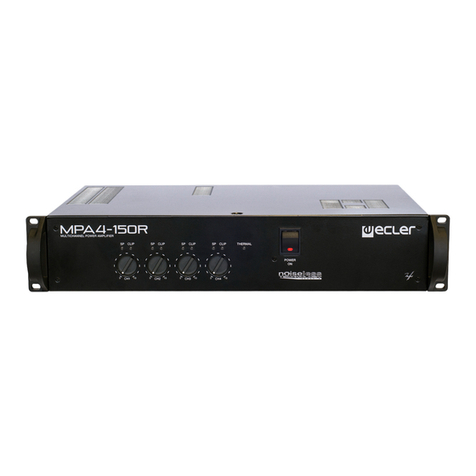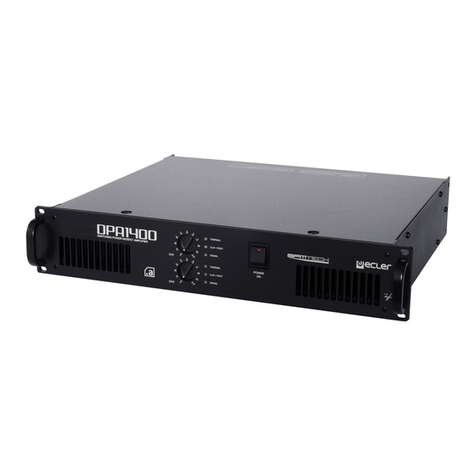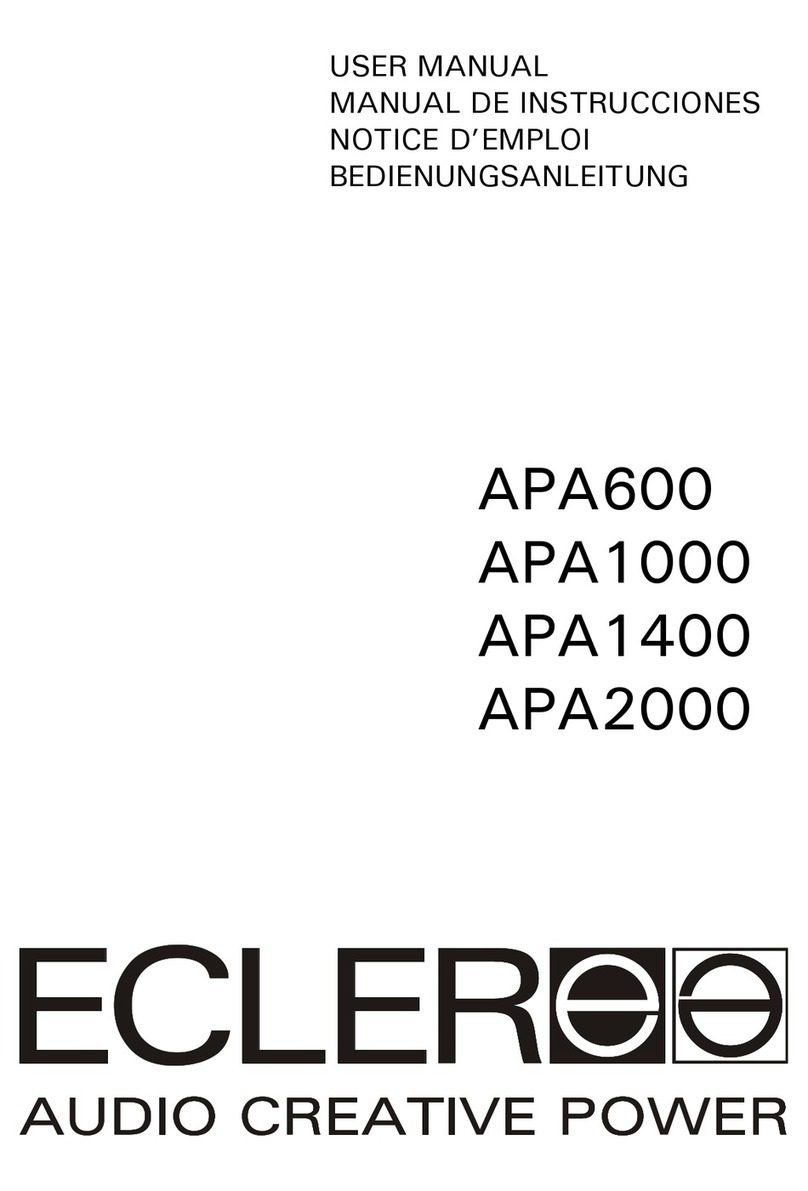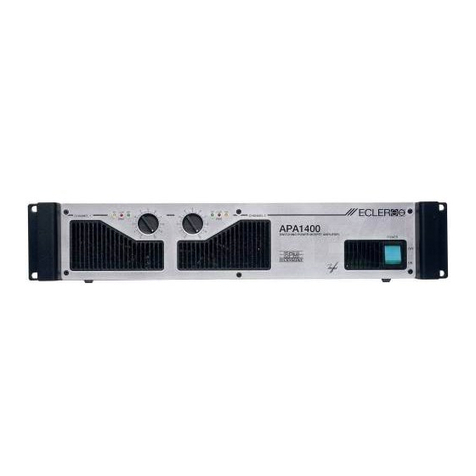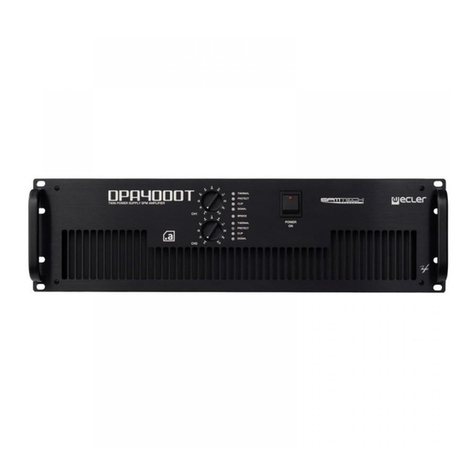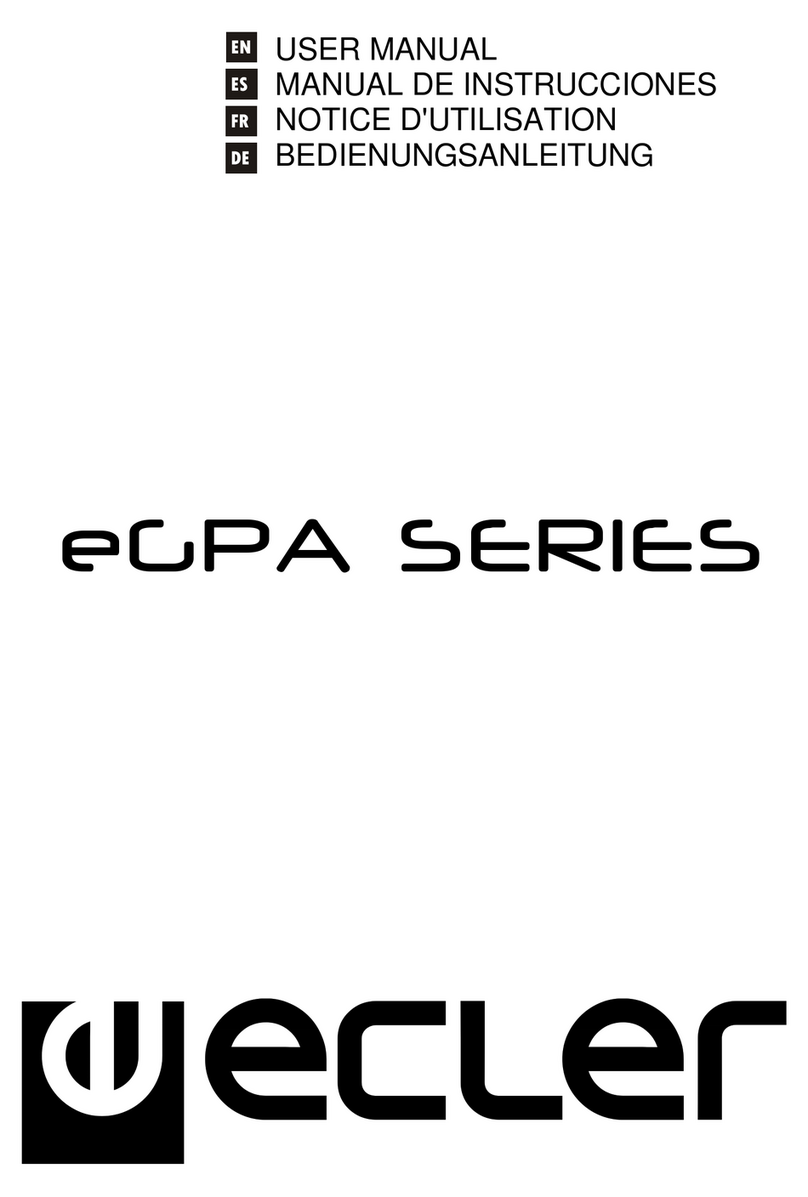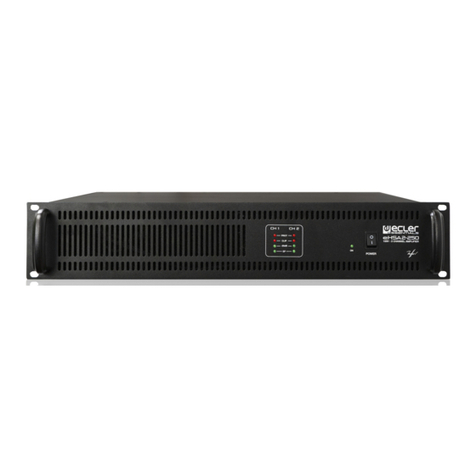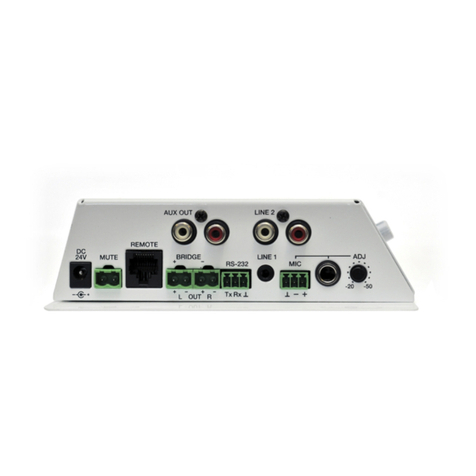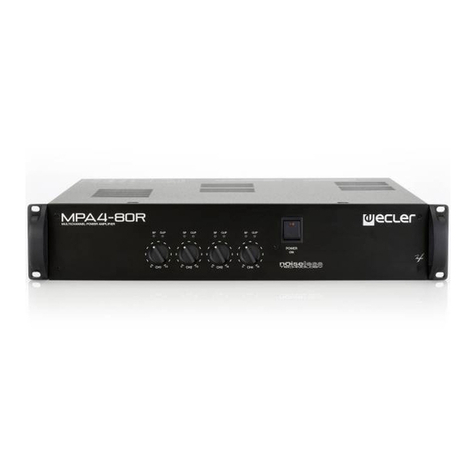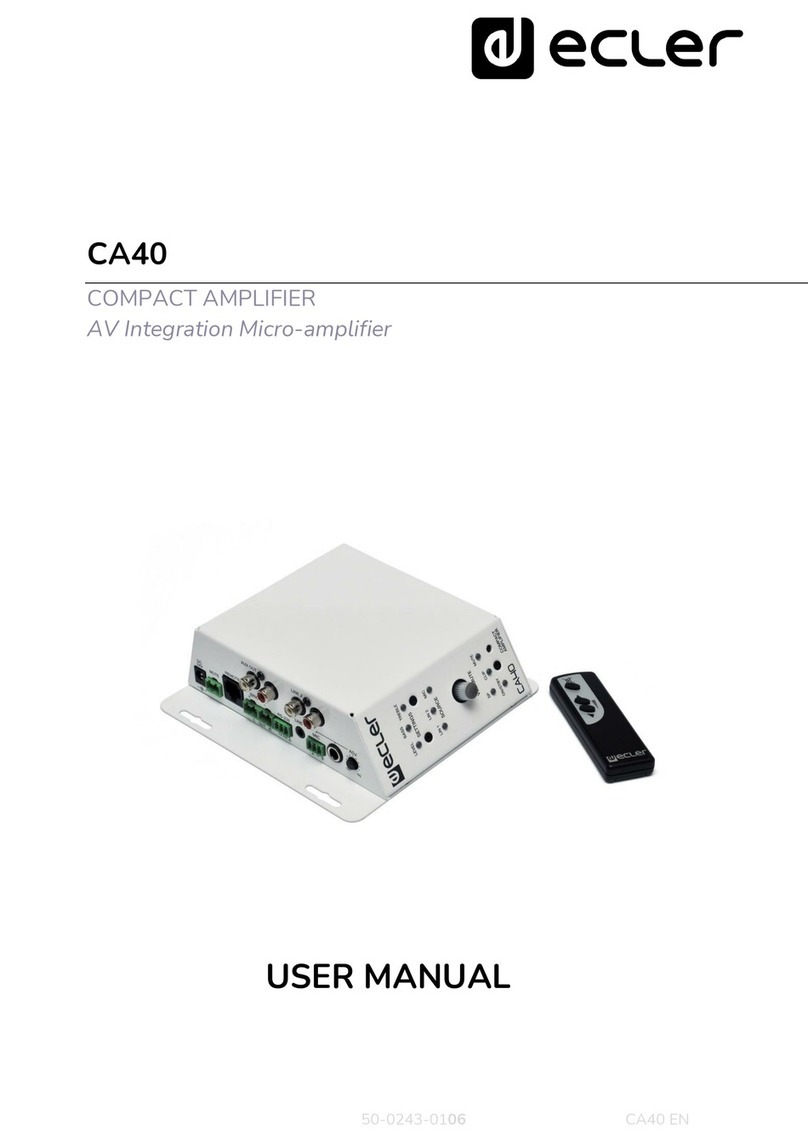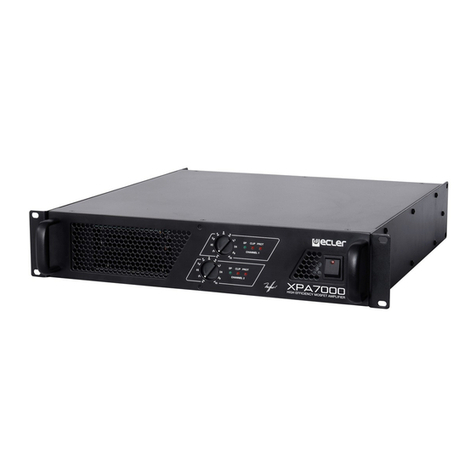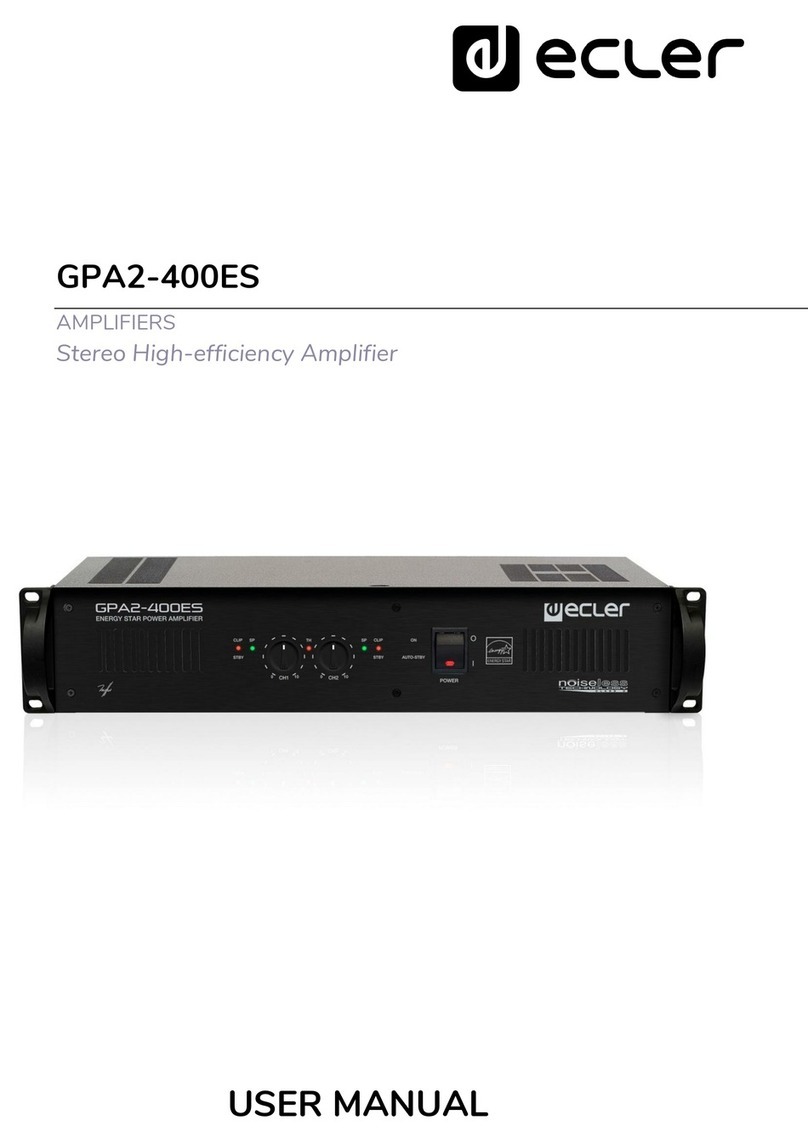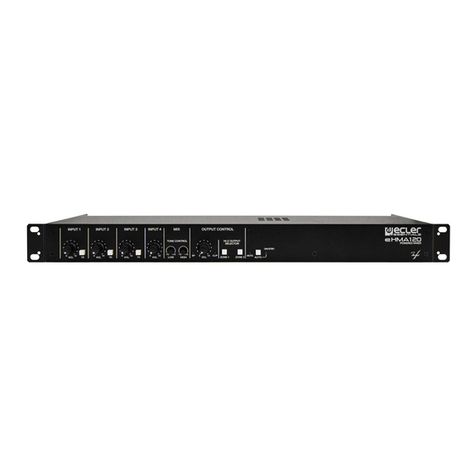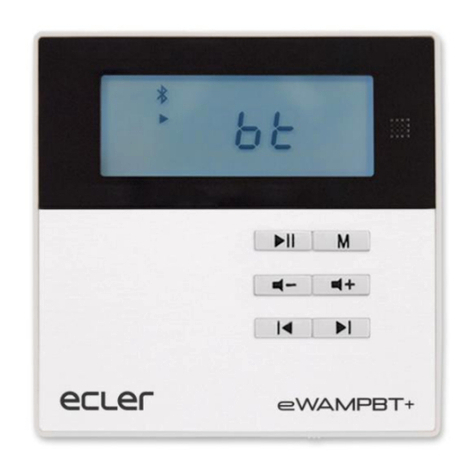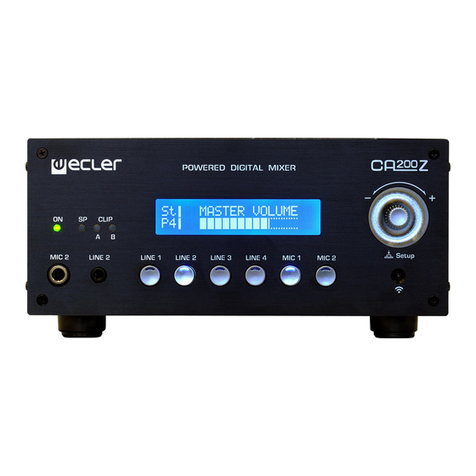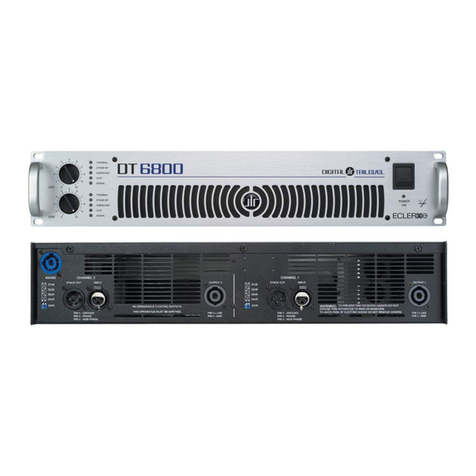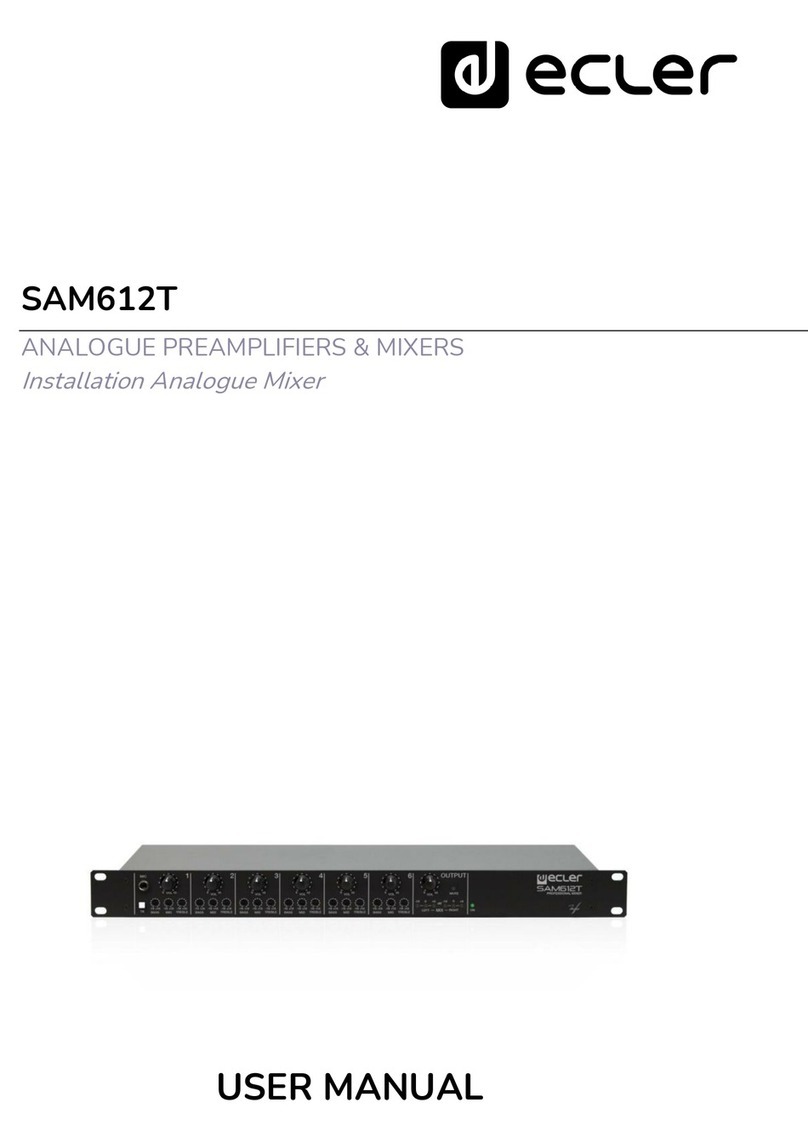3.5. Input/Output options
The AMPACK2-70 allows the following operating modes:
•Stereo: channels 1 and 2 are separately amplified and respectively sent to outputs 1 and 2 (the
Mono/Stereo switch, labelled as MONO 1 +2 on the front panel, must NOT be engaged)
•Parallel (Mono): the Mono/Stereo switch, labelled as MONO 1+2 on the front panel, must be
engaged. Channels 1 and 2 are summed and sent to the amplifier channels 1 and 2, each
channel having an independent output volume
•Bridged: the switch should also be engaged, as in the previous case. Observe the output wiring
guidelines indicated on the device when it operates in bridged mode. Channels used in bridged
mode should have their "VOL" attenuators set at the same position, preferably at maximum
level.
The AMPACK4-70 allows the following operating modes:
•Independent: channels 1, 2, 3 and 4 are independently amplified and respectively sent to
outputs 1, 2, 3 and 4
•Parallel: to operate in this mode, you must connect the same input signal to multiple channels
of amplification, each channel having an independent output volume
•Bridged: this mode can operate with channel pairs 1-2 and/or 3-4. This requires connecting the
same input signal to channels 1-2 (and/or 3-4) and wiring outputs as indicated on the
equipment for operating in bridged mode. Channels used in bridged mode should have their
"VOL" attenuators set at the same position, preferably at maximum level.
4. OPERATION AND USAGE
4.1. Start up
This can be done using the power switch (1) and immediately the ON led (3) will start
lightning. We highly recommend the "safe power up sequence": First the sound sources, then mixer,
equalizers, active filters, processors and, finally, power amplifiers. Powering off should be done by
following the exact reverse sequence in order to avoid any possible peaks reaching the next device,
and consequently protecting the loudspeakers, which are specially sensitive to these peaks.
4.2. Input attenuation
These are rotary potentiometers, one per channel, located on the front panel (9) and labelled
as VOL. These attenuators allow connection of different sound source types, independent level
control per channel of amplification and connection of speakers handling less power than the
amplifier can provide at full capacity (avoiding damage by negligence when setting the sound source
volume). An independent level adjustment can be done using a screwdriver or another appropriate
tool.

